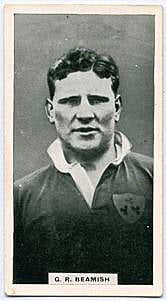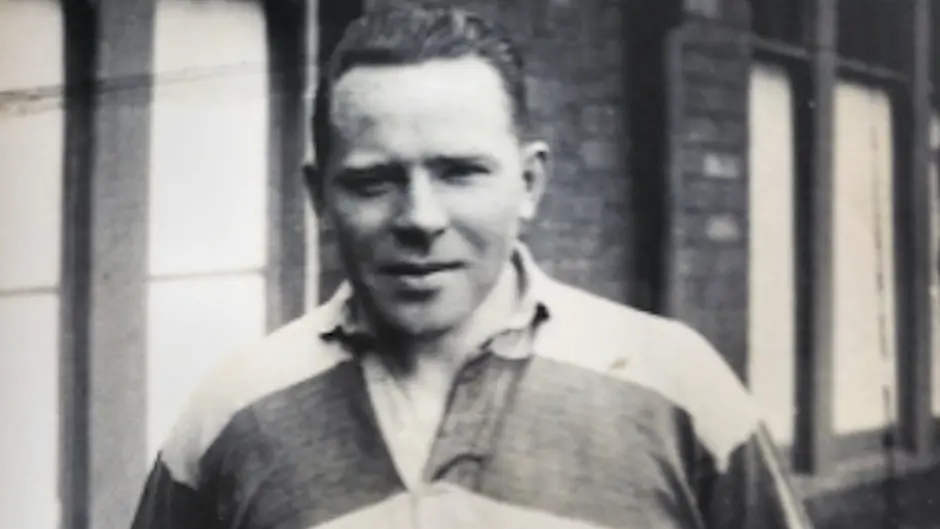BY SAMUEL KINGSTON
TWO men with West Cork connections have played for the rugby touring team known today as the British & Irish Lions. One man was born in West Cork while the other died in West Cork.
With the Lions tour currently in full swing Down Under, it provides an opportunity to remember these connections.
Dunmanway is a GAA stronghold, it’s even the birthplace of Sam Maguire himself. Yet, the town has an unlikely connection with the kit that the British & Irish Lions rugby team now wear.
Most people know that the playing kit represents the four ‘home’ nations with the green on the socks representing Ireland. Not many realise that the man determined to see the green on the playing kit was born in Dunmanway. This man is George Beamish.
On the 1930 tour to New Zealand and Australia, a delegation led by George expressed their displeasure at the fact that whilst the blue of Scotland, white of England and red of Wales were represented in the strip there was no green for Ireland. A green flash was added to the socks, which from 1938 became a green turnover and the Lions look we know today was created. Every time we see the Lions kit and the green on the socks, we can thank a West Cork man for making sure Ireland was represented!
 George Beamish.
George Beamish.
George and his three brothers – Victor, Charles and Cecil – were born in Dunmanway and attended the Model School in the town for a few years. Their father worked in the school. Although George was born in Dunmanway, his family moved up north when he was ten years old.
George developed his love of rugby at Coleraine Academical Institution. He eventually settled in England and played club rugby for Leicester and London Irish. He was capped 26 times for Ireland, winning his first cap at age 19 versus England. After a spell out of the team he was recalled and was a key member of the Irish team from 1928 to ’33. From 1931 to ’33 he captained the Irish team.
His rugby career is just one aspect of his life. His family is a fascinating one. All four Beamish brothers fought for the Royal Air Force in the second World War and like George, all the other brothers were talented sportsmen. Charles also played rugby for Ireland and went on an uncapped Lions tour to Argentina in 1936.
During the war, George saw action mainly in Crete, the Middle East and North Africa. During the war effort he was overshadowed by his older brother Victor, who also loved the game of rugby but his greatest achievements would come in battle. He was an incredible fighter pilot decorated many times. He was killed in action on 28th March 1942 leading his men into combat. It is recorded that he scored ten victories in battle. Victor is a legendary figure in the RAF.
George’s life is told in his biography by Paul McElhinney aptly titled ‘The Lion of the RAF’. He had risen during the war to become a senior commander in the RAF and continued in the RAF after the war. He was knighted for his services in 1955 and retired in 1958. Returning to Ireland, he was appointed as a high sheriff in 1962. He passed away in 1967 aged 62.
Our other Lion toured six years before George in 1924 – Limerick-born William Joseph Roche went on tour to South Africa. William, who had represented Ireland in the early 1920s, was at the time playing his rugby for Newport in Wales, where he considered the best rugby was being played. William studied medicine in UCC, Oxford, and Sorbonne, and was working as an ear, nose and throat doctor in an area where the coal mining industry was king. He was an all-round sportsman – he was amateur light heavyweight boxing champion of Wales and once played a game of hockey for Ireland.
In South Africa, Roche played 12 games out of the 21 games played, scoring a try against Eastern Province. The 1924 tour was the first tour where the Lions nickname was used due to the inclusion of a lion on the team’s tie.
 Sport historian Samuel Kingston with his Irish World of Sport ebook.
Sport historian Samuel Kingston with his Irish World of Sport ebook.
By George’s tour in 1930, the Lions name was widely used and by 1950 the name was official. Later in life and after his involvement with the Royal Army Medical Corps in the second World War, William, his wife Marie and daughter Judie moved to Cork. In 1958 they settled permanently in Innishannon. When working in Cork city, William loved to fish in the Bandon river and he was particularly fond of hunting, including with the Carbery Hunt. He died in 1983 aged 88.
Both George and William were fascinating men. Both represented Ireland, toured with the Lions, and had strong ties to West Cork. Hopefully with the recent growth of rugby in West Cork, we will have some more connections to the Lions in the near future.
Samuel Kingston is a sports historian from Clonakilty. His ebook, the Irish World of Sport is available to purchase online. For more information on the Irish World of Sport please visit the Instagram page or Facebook page








